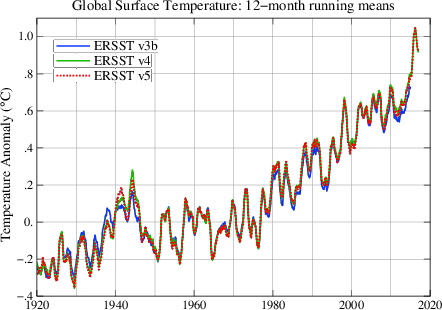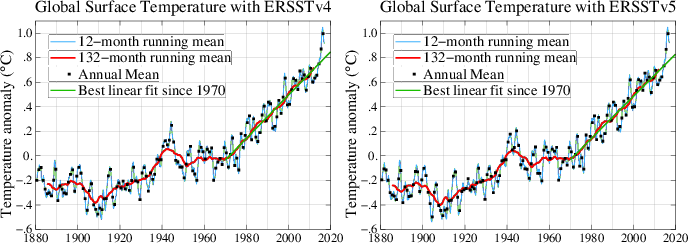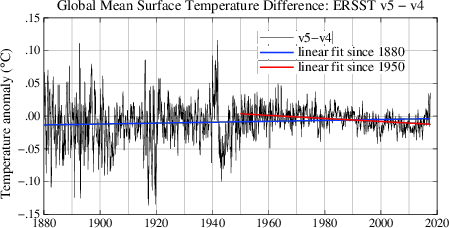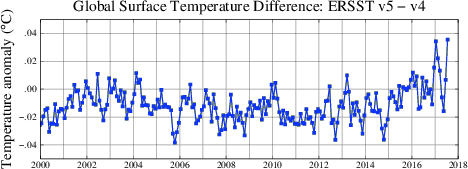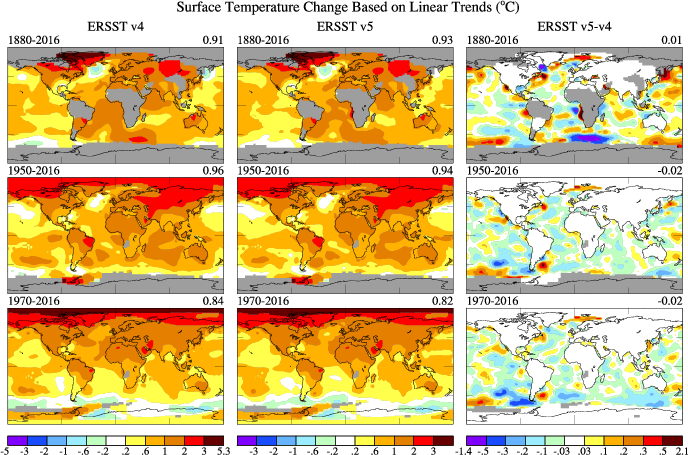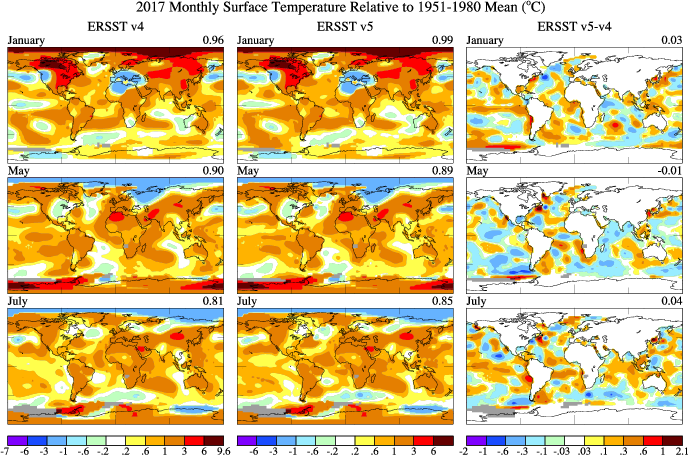According to a NOAA page "The newest version of ERSST, version 5, uses new data sets from ICOADS Release 3.0 (Sea Surface Temperatures) SST; SST comes from Argo floats above 5 meters, Hadley Centre Ice-SST version 2 (HadISST2) ice concentration. ERSSTv5 has improved SST spatial and temporal variability by (a) reducing spatial filtering in training the reconstruction functions Empirical Orthogonal Teleconnections (EOTs), (b) removing high-latitude damping in EOTs, and (c) adding 10 more EOTs in the Arctic. ERSSTv5 improved absolute SST by switching from using Nighttime Marine Air Temperature (NMAT) as a reference to buoy-SST as a reference in correcting ship SST biases. Scientists have further improved ERSSTv5 by using unadjusted First-Guess instead of adjusted First-Guess."
The version 5 is compared to previous versions in some graphs and maps below.
